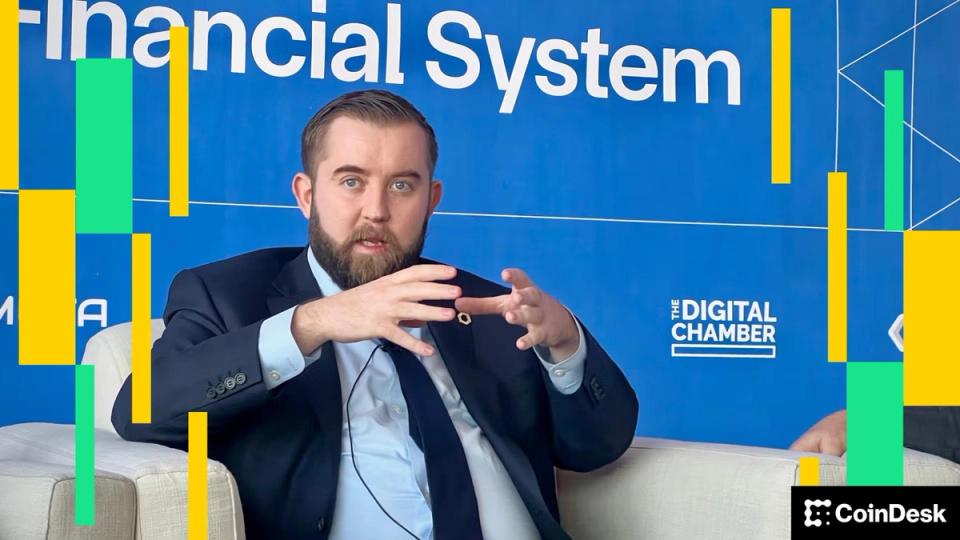The fourth Bitcoin halving event, expected to fall on or around April 19, 2024, heralds a significant transformation in the cryptocurrency landscape.
At its core, the quadrennial halving event involves a reduction in the reward awarded to miners for each block mined on the Bitcoin blockchain (the block subsidy) as determined by the protocol.
Halvings are scheduled to occur roughly every four years, or every 210,000 blocks until the entire 21 million bitcoin supply is mined, roughly by 2140.
As part of bitcoin’s deflationary approach to its limited supply, the upcoming halving will reduce the bitcoin supply subsidy from 6.25 BTC per block to 3.125 BTC, promoting a tighter supply landscape.
Read more: The history of Bitcoin halvings – and why this time may look different
By gradually reducing the number of bitcoins entering circulation, and as long as the acceptance of Bitcoin grows over time, the halving mechanism ensures that the laws of supply and demand will consistently affect the value of the asset.
Impact on price dynamics
Historically, each halving event has been accompanied by a significant increase in bitcoin price in the months before and after the event.
In particular, in the 365 calendar days after the November 28, 2012, halving, bitcoin prices rose by 8.447%, when the reward was cut from 50 BTC to 25 BTC. In the year following the July 9, 2016, halving, bitcoin prices rose a more modest but still impressive 283%, and the block reward was reduced to 12.5 BTC. In the 12 months following the May 11, 2020, halving, where the reward was cut to 6.25 BTC per block, bitcoin price rose 527%.
The pre-halving rally showed a downward trend over time, likely due to miners selling their bitcoin holdings to secure profits ahead of the impending reward reduction.
Read More: Bitcoin Miner Consolidation Appears Imminent As Halving On The Way
Nevertheless, the historical pattern indicates the potential for bitcoin to reach new all-time highs in the wake of the 2024 halving.
Impact of bitcoin spot ETFs
The landscape around bitcoin has evolved significantly, especially with the approval of spot bitcoin ETFs and the influx of institutional capital into the market.
These ETFs have generated significant daily demand, outstripping the rate of new bitcoin supply even before the halving and have the potential to absorb a significant portion of the limited new issuance.
To put the spot bitcoin ETF inflow into perspective, at the current rate of block rewards, the bitcoin network produces about 900 new coins per day, or about $54 million worth of bitcoin (with an average price per coin of $60,000 ).
In April 2024, issuance will drop to 450 coins, or about $27 million worth of bitcoin.
During the month of February, net inflows into US-listed spot bitcoin ETFs averaged $208 million per day, far outstripping the pace of new supply even before the halving.
Read more: Bitcoin ETF snapshot: Segment’s weekly net inflows hit record $2.5B
This imbalance between new demand and limited new issuance probably contributed to the strong upward pressure on the price.
Evolution of a large liquid derivatives market
The emergence of a robust, regulated derivatives market marks a fundamental shift in the halving narrative for three key reasons: it enables price risk to be hedged, it facilitates the management of bitcoin demand risk, and it offers market participants actionable price discovery. .
Miners usually sold their bitcoin for fiat currency while mining it, to pay for operating costs. These constant sales meant that price appreciation was measured. After a halving event, miners would have less bitcoin to sell, meaning the price could rise.
Mining is now dominated by larger, often publicly traded, companies and with a liquid regulated derivatives market, it is possible for these firms to hedge and lock in future bitcoin prices to cover expenses without having to sell their coins. to sell.
If this is the case, selling pressure from miners is less likely to act as a drag on bitcoin prices going forward.
A higher number of investors and traders means better liquidity and improved price stability for bitcoin. It is worth noting that bitcoin has become less volatile in recent years, with less extreme movements both to the upside and to the downside.
Impact on miners
The impending halving presents challenges and opportunities for miners, as evidenced by shifts in miner behavior and industry dynamics.
Diminished bitcoin reserves held by miners, coupled with increased competition and record high hash rates, highlight the need for operational efficiency and strategic adaptation.
The number of bitcoins held in wallets associated with miners has fallen to its lowest level since July 2021, suggesting that miners may be capitalizing on bitcoin’s recent price surge, depleting their holdings ahead of the halving or using them to raise capital. to raise for the upgrading of machinery and mining. facilities.
In previous cycles, there weren’t many large-scale miners and even fewer publicly traded ones. The halving could catalyze merger and acquisition activity among mining companies, drive industry consolidation and promote innovation in sustainable mining practices.
The Rise of Ordinals
The recent surge in retail demand can be attributed in part to the rise of bitcoin Ordinals BRC-20 tokens, which are reshaping the crypto landscape.
Often compared to “NFTs for Bitcoin,” these tokens have the potential to drive activity in the chain and increase transaction fees, thereby bolstering miners’ revenue streams amid declining block rewards post-halving.
Long-term prospects
Bitcoin’s designation as “digital gold” underscores its role as a store of value, especially amid the scarcity amplified by halving events.
Institutional investors who view bitcoin as a hedge against inflation may support the halving of its perceived value.
Shifts in central bank policies, such as prolonged higher interest rates and potential quantitative easing measures, could further strengthen bitcoin’s appeal as a hedge against currency devaluation.
Read more from our opinion section: Stop worrying so much about the next Bitcoin halving
Looking ahead, the implication of bitcoin’s programmed scarcity intersecting with changing demand dynamics remains intriguing. While passing cycles, with their accompanying price rallies, offer valuable insights, the 2024 halving presents a unique confluence of factors that could usher in a new era for bitcoin.
With 28 more halving events expected over the next 112 years, the future trajectory of bitcoin adoption and network growth warrants close monitoring — especially when broader access to bitcoin was made possible in the US only less than 90 days ago with the approval of mock bitcoin ETFs.
As institutional and retail interests coincide with regulatory developments and macroeconomic shifts, maintaining a balanced perspective is essential to navigating the evolving Bitcoin landscape.
Payal Shah serves as CME Group’s director of equity and cryptocurrency research and product development. She is responsible for leading the development of new and innovative products across the crypto, equity and alternative investment markets. This includes a comprehensive range of futures and options contracts on key benchmark indices such as the S&P 500 and NASDAQ-100, as well as international access through regional indices. Since joining the company in 2016, Shah has been heavily involved in the crypto space, helping with the creation of CME Group’s more than 50 cryptocurrency benchmarks, including Bitcoin and Ether futures and options, microcontract suite and event-driven markets. She serves on the CME CF Cryptocurrency Oversight Committee. Prior to joining CME Group, Shah was an ETF specialist at MSCI and held trading roles within the Equity Derivatives Group at Morgan Stanley.
Start your day with the best crypto insights from David Canellis and Katherine Ross. Subscribe to the Rich newsletter.
Explore the growing intersection between crypto, macroeconomics, policy and finance with Ben Strack, Casey Wagner and Felix Jauvin. Subscribe to the On the Margin newsletter.
The Lightspeed newsletter is everything Solana, delivered to your inbox every day. Subscribe to daily Solana news from Jack Kubinec and Jeff Albus.
Disclaimer for Uncirculars, with a Touch of Personality:
While we love diving into the exciting world of crypto here at Uncirculars, remember that this post, and all our content, is purely for your information and exploration. Think of it as your crypto compass, pointing you in the right direction to do your own research and make informed decisions.
No legal, tax, investment, or financial advice should be inferred from these pixels. We’re not fortune tellers or stockbrokers, just passionate crypto enthusiasts sharing our knowledge.
And just like that rollercoaster ride in your favorite DeFi protocol, past performance isn’t a guarantee of future thrills. The value of crypto assets can be as unpredictable as a moon landing, so buckle up and do your due diligence before taking the plunge.
Ultimately, any crypto adventure you embark on is yours alone. We’re just happy to be your crypto companion, cheering you on from the sidelines (and maybe sharing some snacks along the way). So research, explore, and remember, with a little knowledge and a lot of curiosity, you can navigate the crypto cosmos like a pro!
UnCirculars – Cutting through the noise, delivering unbiased crypto news







